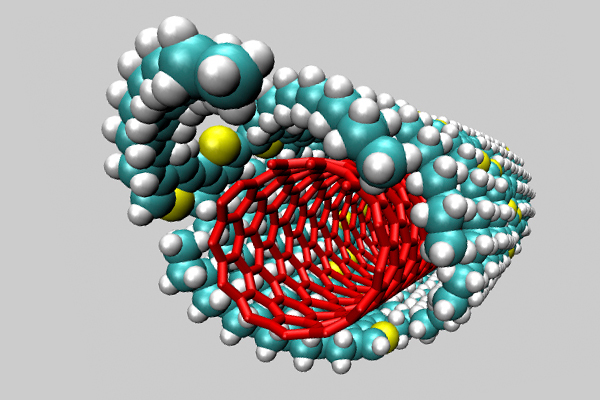Sorting out semiconducting and conducting nanotubes
November 21, 2011

A computer-generated cross section of a polymer-coated carbon nanotube. The polymer shell (blue) wraps around a semiconducting single-walled carbon nanotube (red). (Credit: Francois Gygi and Giulia Galli/UC-Davis)
A technique to selectively sort semiconducting single-walled carbon nanotubes and conducting nanotubes has been discovered by researchers at Stanford University, University of California-Davis, and the Samsung Advanced Institute of Technology.
When nanotubes are manufactured, semiconducting nanotubes, which work for transistors and solar cells, are mixed with conducting nanotubes, which work for batteries. Mixtures of conducting and semiconducting nanotubes do not carry enough current for wires or battery electrodes. And when the mixture is used for semiconducting, as in a transistor, the excess current from the conducting nanotubes will short the device.
In the new process, a polymer selectively wraps around semiconducting nanotubes, but not around conducting nanotubes.
Past polymers have insulated the nanotubes and required extensive removal treatments to restore the conductivity of the nanotubes. The polymer in the new process does not need to be removed.
The semiconducting nanotubes could be used in flexible transistors for circuits printed on plastic, bendable display screens, and stretchable electronics.
Ref.: Hang Woo Lee et al., Selective dispersion of high purity semiconducting single-walled carbon nanotubes with regioregular poly(3-alkylthiophene)s, Nature Communications, 2011 [doi:10.1038/ncomms1545]